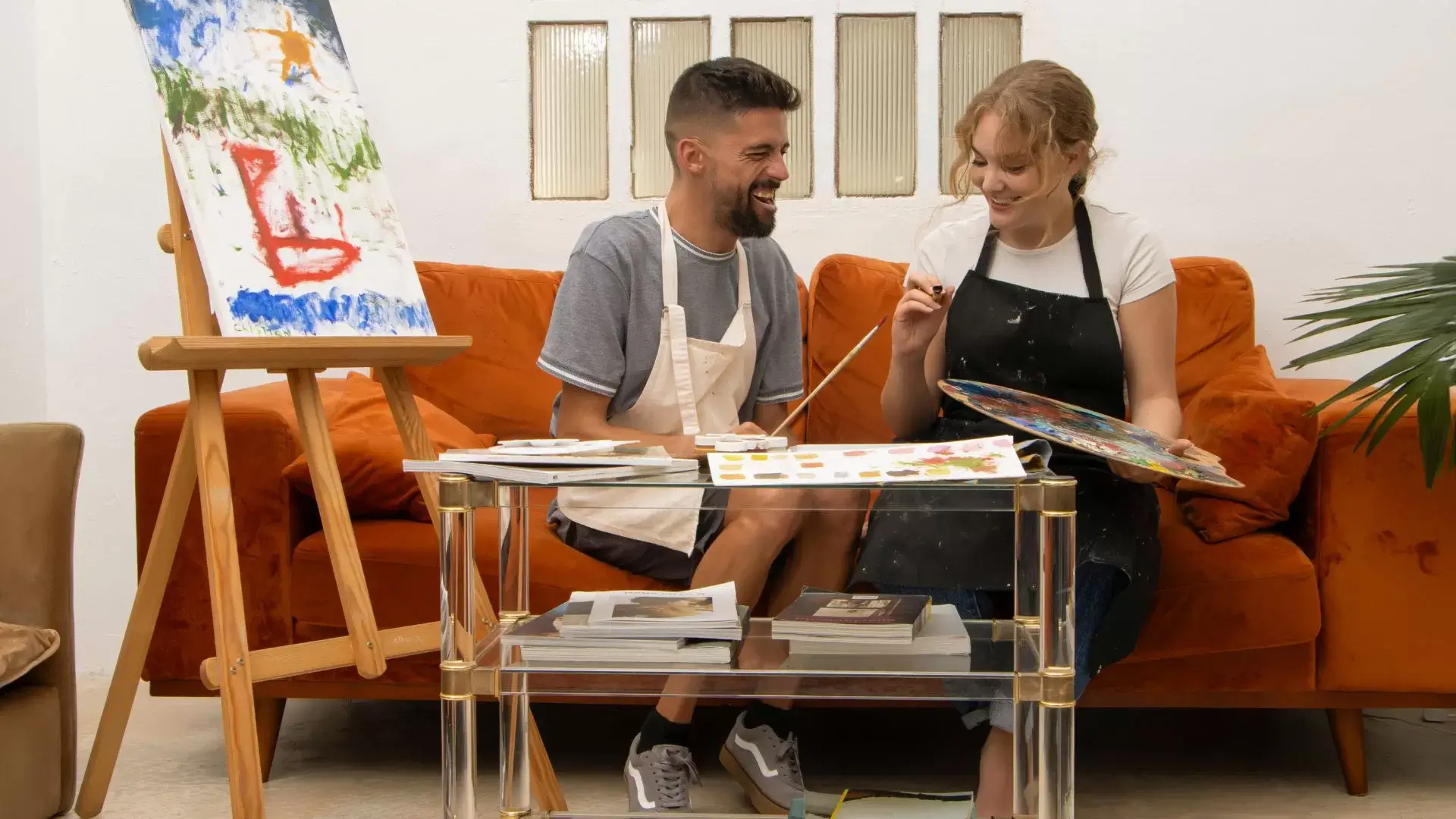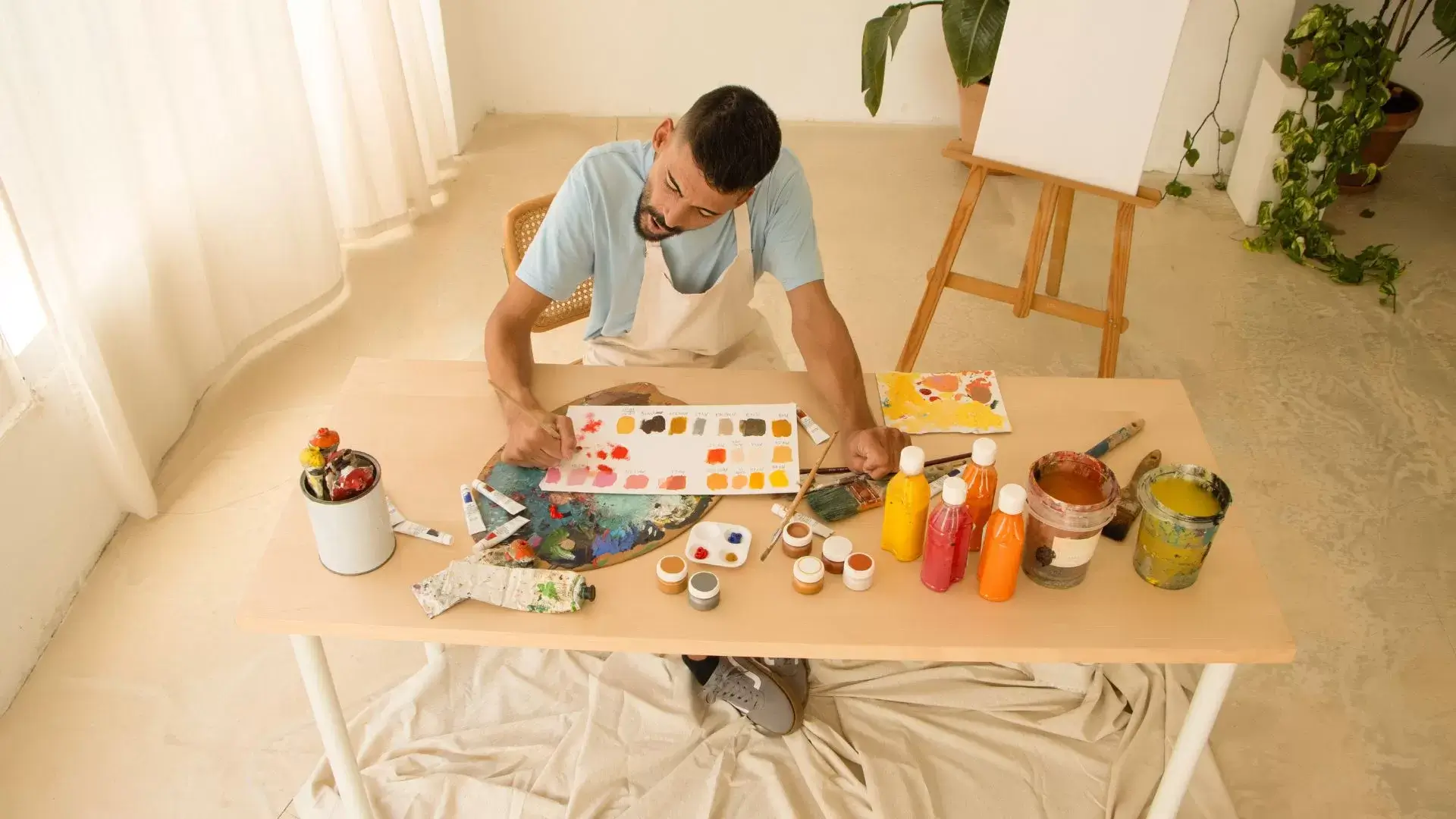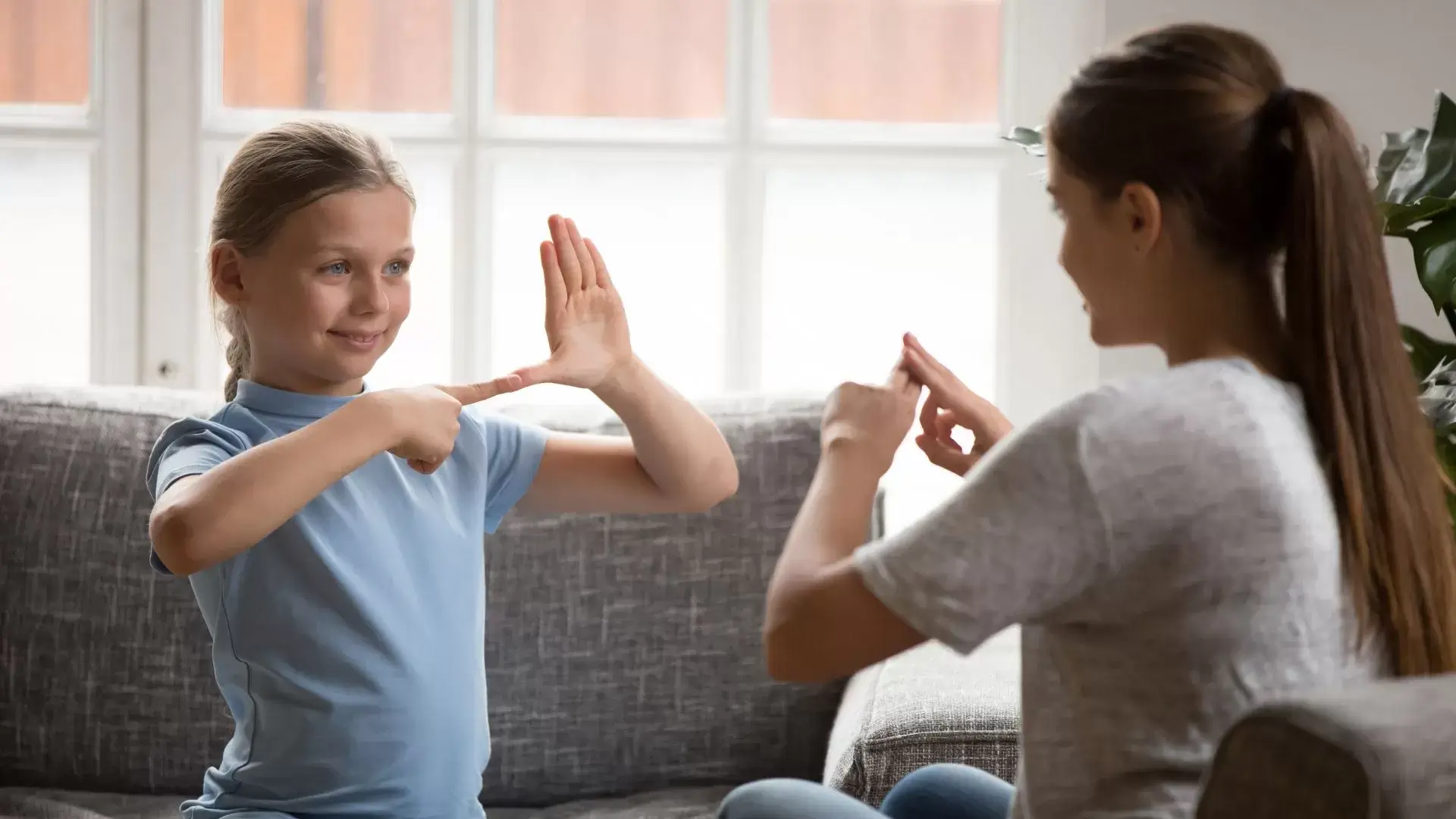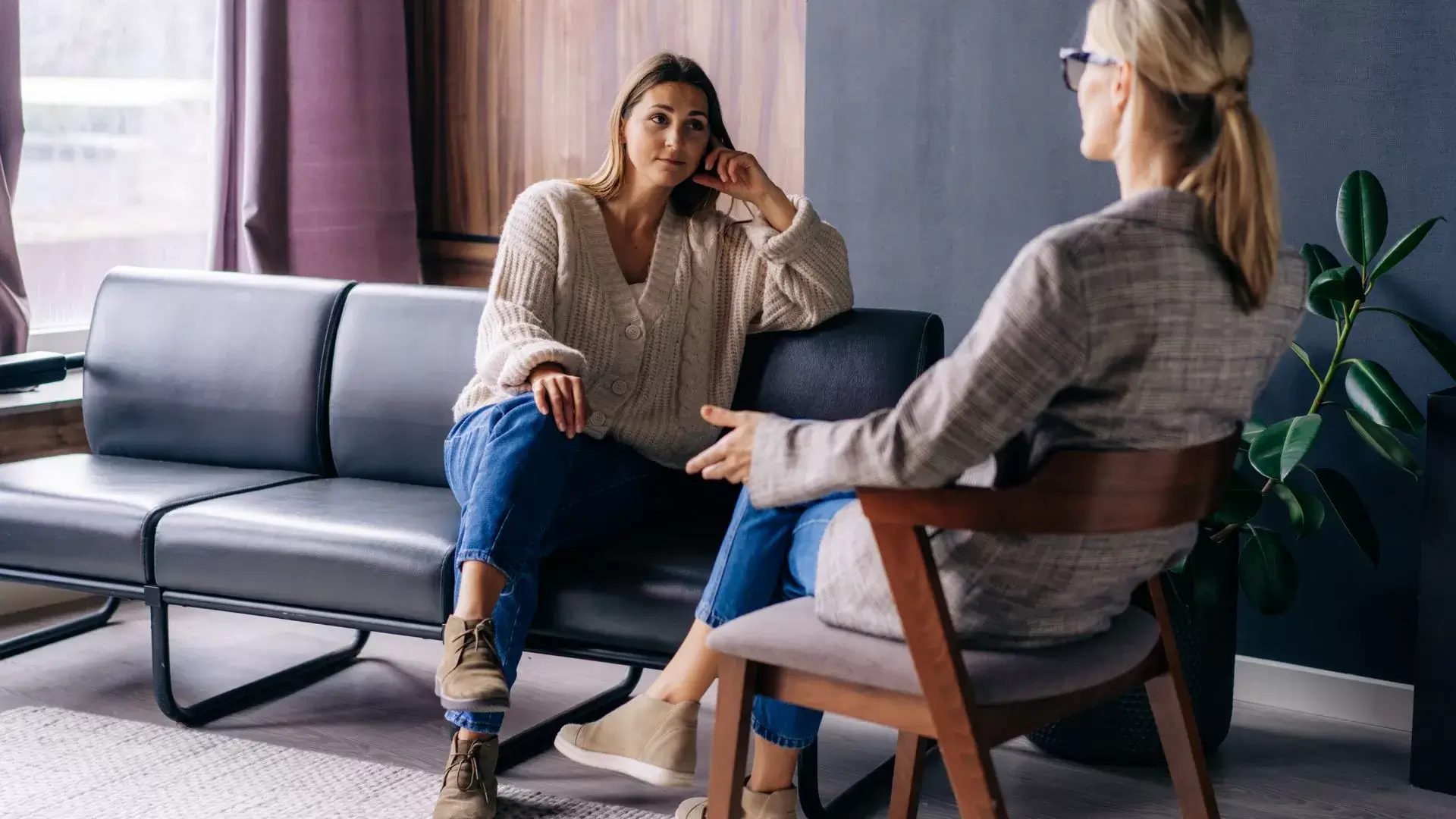Art Therapy and Expressive Therapies
Art therapy and expressive therapies open up meaningful pathways for our emotional healing. Through creative expression, we can explore complex feelings in ways that traditional talk therapy often can’t reach. Whether it’s drawing, painting, or sculpting, these modalities allow us to communicate our innermost selves, fostering resilience and personal growth.
Engaging in these artistic practices helps us connect deeply with our emotions, encouraging mindfulness and self-discovery. It’s about nurturing a safe space where we’re free to express and uncover our true experiences. If we’re curious about how these therapies can support our journeys, there’s much more to explore together.

About Our Psychotherapy Counseling Services
At our practice, we’re dedicated to providing compassionate psychotherapy counseling services that empower individuals to explore their emotions and experiences in a safe environment. We believe that self-exploration is essential for emotional healing, and that’s why we incorporate art therapy and expressive therapies into our approach. Through therapeutic art, we encourage creative expression as a powerful tool for emotional expression.
Our art therapy techniques are designed to facilitate a deeper understanding of one’s feelings and thoughts. We recognize that art for mental health can break down barriers that traditional talk therapy might not reach. Whether it’s through painting, drawing, or other forms of creative expression, we guide individuals in using their artistic abilities to navigate complex emotions.
The Benefits of Art-Based Interventions for Emotional Healing
Art-based interventions offer a unique pathway for emotional healing, allowing us to connect with our feelings in ways that words alone sometimes can’t capture. Through healing through art, we can explore our emotions without the constraints of language, making it an invaluable tool for those seeking emotional balance. The art therapy benefits are profound, particularly for individuals dealing with anxiety. Engaging in therapeutic art activities helps us express our innermost thoughts, often leading to breakthroughs we didn’t anticipate.
Creative therapies invite us to tap into our imagination, offering a safe space for self-expression. This process not only enhances our art and emotional health but also nurtures our ability to cope with life’s challenges. When we embrace art for self-expression, we’re actively participating in our healing journey.
Expressive arts therapy encourages vulnerability, allowing us to confront difficult emotions and experiences. As we create, we pave the way for emotional healing, fostering resilience and understanding. Together, we can discover the transformative power of art, recognizing that it’s not just about the final product but the journey it takes us on.
Exploring Creative Expression in Art Therapy
When we explore creative expression in art therapy, we uncover not only our emotions but also the unique stories that shape who we are. Through therapeutic creativity, we engage in creative exploration that allows us to express feelings that might be difficult to articulate. Art therapy for trauma often provides a safe space for nonverbal communication, enabling us to convey complex emotions through expressive art forms.
In our journey of art for self-discovery, we can participate in various art therapy exercises that encourage therapeutic expression. Each brushstroke or sculpted form becomes a reflection of our inner world, fostering emotional resilience as we confront and process our experiences. We may find that the act of creating not only helps us understand our past but also empowers us to envision a brighter future.
Art as therapy invites us to embrace vulnerability, as we learn to trust the creative process. By engaging in this transformative practice, we cultivate a deeper connection with ourselves and others, enriching our emotional landscape and enhancing our overall well-being. Together, we can harness the healing power of art to navigate our personal journeys toward growth and recovery.
Therapeutic Art Techniques: Drawing, Painting, and Sculpting
Engaging in therapeutic art techniques like drawing, painting, and sculpting allows us to release our creativity and explore our emotions in a deeply personal way. Through therapeutic drawing, we can express feelings that might be hard to verbalize, while painting therapy invites us to splash colors that reflect our inner states. Sculpting therapy offers a tactile experience, enabling us to mold our thoughts into physical forms, providing art for emotional regulation.
In art therapy for depression, these expressive arts modalities become essential tools. They help us navigate complex emotions and foster psychological insight. As we immerse ourselves in the creative process, we often find that the therapeutic imagery we create serves as a mirror, reflecting our innermost struggles and triumphs.
Participating in art therapy workshops can enhance this journey, offering a supportive community where we can share our experiences and learn from one another. Together, we can discover the healing power of creativity, allowing art to guide us toward greater understanding and self-acceptance. Ultimately, these techniques not only foster emotional expression but also pave the way for profound personal growth and connection.

Healing Through Art: A Path to Self-Discovery
Through our creative journeys in art therapy, we often uncover layers of ourselves that lead to deeper self-discovery and healing. Engaging in visual arts therapy allows us to explore emotions and thoughts that might otherwise remain hidden. As we immerse ourselves in art journaling or therapeutic painting, we create expressive outlets that facilitate our journey towards self-awareness.
Mindfulness through art enhances our ability to connect with the present moment, providing a calming space for reflection. Each brushstroke or pencil mark becomes a pathway to understanding our inner selves, promoting creative healing. Art therapy for adults encourages us to embrace vulnerability, fostering a safe environment to express feelings that might be difficult to articulate.
Through these experiences, we gain insights into our personal narratives, transforming struggles into powerful works of art. Healing arts therapy not only nurtures our creativity but also empowers us to confront challenges, helping us move forward. By embracing art for self-awareness, we collectively discover that the journey of healing is deeply personal yet universally shared. Together, we can find strength in our artistic expressions, paving the way for growth and transformation.
Art Therapy for Trauma and PTSD Recovery
Art therapy offers a unique sanctuary for individuals grappling with trauma and PTSD, allowing us to express our deepest emotions in a safe and supportive environment. Through art therapy for PTSD, we can begin our journey of art and trauma recovery, using therapeutic art practices to reveal our feelings. Expressive drawing becomes a powerful tool for us to communicate what words often can’t convey, enabling art as emotional release.
In our sessions, we engage in art for grief processing, creating symbolic representations of our experiences. This creative problem-solving not only helps us confront our pain but also fosters resilience and growth. Art therapy assessments guide our exploration, ensuring that our therapeutic journey is tailored to our needs.
Mindfulness Through Art: Exercises and Techniques
Finding calm in the creative process, we can harness mindfulness techniques to deepen our connection with ourselves and the world around us. In our art therapy sessions, we can engage in activities that promote art for stress relief, allowing us to experience creative mindfulness in a supportive environment. One powerful approach is self-reflective art, where we explore our thoughts and feelings through artistic mediums.
Visual journaling can serve as a daily practice, offering us a safe space to express our emotions and reflect on our experiences. By creating therapeutic collages, we can piece together fragments of our stories, fostering a sense of healing and self-discovery. Storytelling through art encourages us to connect with our inner narratives, enhancing our understanding of ourselves.
Additionally, we can utilize art for self-regulation, helping us manage our emotions through various artistic techniques. Incorporating art-based interventions into our lives not only nurtures our creativity but also supports our overall well-being. Together, we can cultivate mindfulness through art, transforming our creative sessions into meaningful journeys of self-exploration and healing.
Art Therapy for Anxiety and Depression Management
Creative expression can serve as a powerful tool in managing anxiety and depression, allowing us to channel our feelings into tangible forms that promote healing and understanding. At Psychotherapy Counsellors, we’re fortunate to have access to resources like art therapy for children, which emphasizes the importance of creative resilience. By utilizing art therapy tools, we can explore our inner emotions through various mediums, fostering a safe space for expression.
In our journey toward mental well-being, art and mental health intersect beautifully. Through creative interventions, we can navigate our struggles and find solace in the process of creation. Art-based counseling offers us a unique approach, allowing us to visualize our thoughts and feelings.
Symbolic art therapy can help us articulate what might be too challenging to express verbally. As we engage in these practices, we often discover new facets of ourselves, leading to personal growth and understanding. If you’re interested in exploring these therapeutic options, don’t hesitate to reach out to us. Together, we can initiate a transformative journey toward healing, embracing the power of creativity.
The Role of Artistic Mediums in Therapeutic Creativity
Exploring different artistic mediums can deeply enhance our therapeutic journey, allowing us to express emotions in ways that words often can’t capture. Each medium—whether it’s painting, sculpture, or collage—offers unique pathways for us to navigate our feelings. For instance, the fluidity of paint can symbolize our emotions in motion, while the tactile nature of clay can ground us in the present moment.
As we experiment with these various forms, we create opportunities for self-discovery. The act of choosing a medium can be intuitive; sometimes, we’re drawn to materials that resonate with our current state of mind. This connection reinforces our sense of agency and encourages us to embrace vulnerability.
Moreover, engaging with artistic mediums fosters a safe space for reflection. We can explore our inner landscapes without judgment, allowing for healing to unfold organically. In this way, art becomes not just a form of expression but also a mirror, helping us to understand ourselves more fully.
Nonverbal Communication and Emotional Expression in Art Therapy
Art therapy provides us with a powerful avenue for nonverbal communication, allowing our emotions to surface through colors, shapes, and textures that often convey what words cannot. In our sessions, we find that when we put brush to canvas or clay to hand, we’re able to express feelings that may be too complex or painful to articulate. Each stroke or mold becomes a reflection of our inner experiences, guiding us to deeper self-understanding.
Nonverbal expression in art allows us to bypass the barriers that language can impose. We can explore themes of joy, grief, anger, or hope without the constraints of vocabulary. This freedom fosters a safe space where we can authentically connect with our emotions. As we create, we often discover insights about ourselves that we hadn’t recognized before, revealing patterns and truths hidden beneath the surface.
Moreover, sharing our artwork with others can be a profound experience. It opens up conversations that might not happen otherwise, inviting empathy and connection. In this way, art therapy becomes not just a personal journey, but a shared experience, helping us navigate our emotional landscapes together.

Expressive Arts Therapy for Children and Adults
Expressive arts therapy offers a unique opportunity for both children and adults to engage with their emotions in a supportive environment, helping us to heal and grow through the power of creativity. Through various forms of artistic expression—like drawing, painting, music, and movement—we’re encouraged to explore our feelings in a way that feels safe and non-threatening.
For children, this therapy can be especially transformative. It provides them with an outlet to express their thoughts and feelings that they may not yet have the words for. By facilitating this expression, we can help them navigate complex emotions, build self-esteem, and enhance their social skills. For adults, engaging in expressive arts therapy can be equally beneficial. It allows us to reconnect with our inner selves and process experiences that might be difficult to articulate.
In both cases, the collaborative nature of expressive arts therapy fosters a sense of community. We learn from one another and share our journeys, creating a supportive network that encourages healing. Ultimately, this therapy empowers us to embrace our creativity, leading to personal growth and emotional resilience. Together, we can discover the profound impact that art can have on our well-being.
Creative Healing: Art Therapy Sessions for Mental Health
Building on the power of creative expression, art therapy sessions provide a transformative space for individuals seeking to address their mental health challenges. We’ve witnessed how engaging in art-making allows us to tap into emotions that words often fail to convey. In these sessions, we’re encouraged to explore our thoughts and feelings through various artistic mediums, whether it be painting, drawing, or sculpting.
As we create, we find ourselves in a non-judgmental environment where self-discovery flourishes. This process not only fosters emotional release but also cultivates resilience and self-acceptance. Each brushstroke or clay molding becomes a step toward understanding our inner selves and the complexities of our experiences.
Moreover, art therapy isn’t just about the final piece; it’s about the journey of creation. We learn to embrace imperfections and celebrate our unique expressions, which can be incredibly empowering. By sharing our creations in a supportive group, we foster connection and empathy, reducing feelings of isolation. Ultimately, art therapy sessions serve as a gentle reminder that healing is possible, and through creativity, we can navigate our mental health journeys together.
Using Art Journaling for Emotional Resilience and Self-Awareness
Engaging in art journaling offers us a powerful tool for enhancing emotional resilience and fostering self-awareness as we navigate our inner landscapes. Through the simple act of putting pen to paper or brush to canvas, we create a safe space to explore our feelings, thoughts, and experiences. It’s not about artistic talent; it’s about the process of expression.
As we release our emotions onto the page, we often uncover layers of our inner selves that we may not have fully recognized. This exploration can help us identify patterns in our emotions, enabling us to respond to challenges with greater awareness and strength. When we reflect on our art later, we gain insights into our journeys, helping us understand our reactions and coping mechanisms.
Moreover, art journaling acts as a gentle reminder that it’s okay to feel vulnerable. It encourages us to embrace our emotions, rather than suppress them, promoting a healthier relationship with ourselves. Ultimately, through our shared experiences in art journaling, we cultivate emotional resilience and self-awareness, empowering ourselves to face life’s uncertainties with a more grounded sense of self. Together, we can find healing and growth in our creative expressions.
Creative Problem-Solving and Psychological Insight in Art Therapy
Art therapy provides us with a unique opportunity to unfasten our creative potential, allowing for innovative problem-solving and deeper psychological insights into our lives. Through artistic expression, we can explore complex emotions and thoughts that might be difficult to articulate verbally. This process encourages us to think outside the box, helping us to confront challenges in new and imaginative ways.
As we engage with different mediums—whether it’s painting, drawing, or sculpting—we often find ourselves tapping into resources within us that we didn’t even know existed. This exploration can lead to moments of clarity, where solutions to our problems become more visible. It’s as if the act of creating paves the way for our minds to roam freely, unburdened by conventional constraints.
Moreover, the insights gained during these sessions can deeply enhance our understanding of ourselves. We learn to recognize patterns in our emotions and behaviors, which can guide us toward healthier responses. By embracing the therapeutic nature of art, we’re not just solving problems; we’re initiating a journey of self-discovery and empowerment that enriches our lives. Together, we can cultivate a creative space that nurtures our well-being and growth.
Get in Touch with Our Registered Psychotherapy Counsellors
If you’re seeking support on your journey to self-discovery, reaching out to our registered psychotherapy counsellors can make a significant difference in your healing process. We recognize that taking this step can feel intimidating; however, it’s a courageous move towards understanding yourself better and addressing the challenges you face.
Our team is dedicated to providing a safe, non-judgmental space where you can express your thoughts and feelings freely. We believe in the power of connection and empathy, recognizing that everyone’s journey is unique. By collaborating with our trained professionals, you’ll be able to explore your emotions, gain insight, and develop coping strategies tailored to your individual needs.
We’re here to support you every step of the way. Whether you’re dealing with anxiety, depression, or simply seeking to understand yourself more deeply, we’ll work together to create a personalized approach that resonates with you. Remember, it’s okay to ask for help, and we’re ready to listen. Let’s begin this journey toward healing and growth together. Reach out today, and let’s start this transformative process.
Frequently Asked Questions
What Qualifications Do Art Therapists Typically Hold?
When we think about qualifications for professionals in a creative field, it’s essential to contemplate both education and experience. Typically, these individuals hold advanced degrees in their respective disciplines and often pursue additional certifications. They’ve also likely engaged in supervised practice to hone their skills. It’s encouraging to see such dedication, as it reflects their commitment to helping others through their expertise and understanding of the human experience.
Is Prior Artistic Experience Necessary for Art Therapy?
We often wonder if prior artistic experience is necessary for exploring creative outlets. The truth is, it’s not a requirement. What really matters is our willingness to express ourselves and engage in the process. We can find meaning in simply letting our thoughts and feelings flow, regardless of our skill level. Embracing creativity can be liberating, and it’s about connection and exploration rather than perfection. We’re all capable of creative expression!
How Long Does a Typical Art Therapy Session Last?
When we think about how long a typical session lasts, we often find that most sessions are about 50 to 90 minutes long. This timeframe allows us to dive deep into our thoughts and feelings without feeling rushed. It’s important for us to have that space to express ourselves and reflect on our experiences. Ultimately, we can adjust the duration based on our needs, ensuring that we’re comfortable and supported throughout the process.
Can Art Therapy Be Conducted Online or Virtually?
Yes, we can absolutely conduct sessions online or virtually! Many of us have found that virtual formats can be just as effective as in-person meetings. They allow us to connect from the comfort of our own spaces, which can foster openness and creativity. Plus, we’ve seen how technology can bridge distances, enabling us to access support whenever we need it. It’s all about finding what works best for each of us.
What Age Groups Can Benefit From Art Therapy?
When we think about who can benefit from creative expression, we realize it’s truly for everyone. Children often find joy and healing through imaginative play, while teenagers can use it to navigate complex emotions. Adults, too, can discover insights and relief from stress. Even seniors can engage, tapping into memories and feelings. No matter the age, we can all find a voice and release through creative outlets, enriching our lives in meaningful ways.


